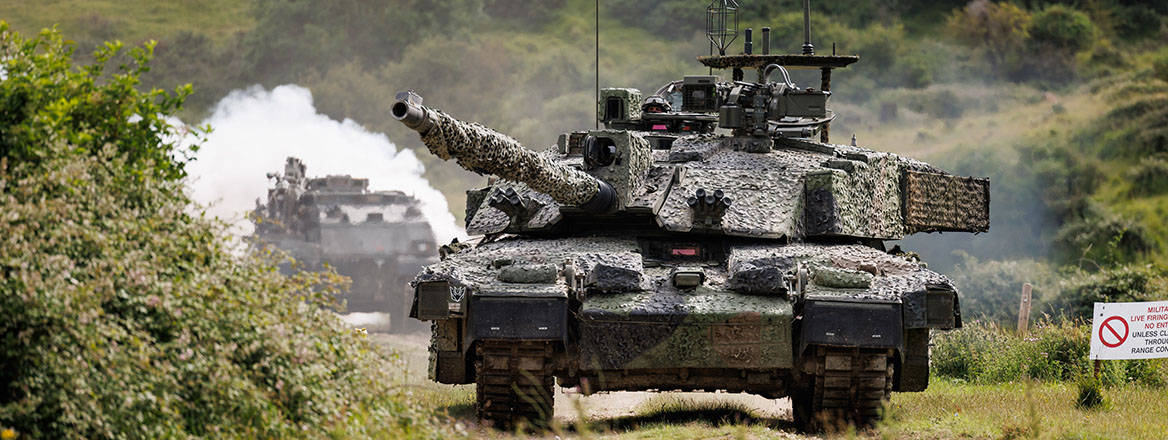Heavy Armoured Forces in Future Combined Arms Warfare
Adaptations are necessary if heavy armoured forces are to remain relevant. This paper argues that the primary requirement is to implement a comparative shift away from protection and towards mobility.
The British Army is likely to be called on to engage in high-intensity warfighting at some stage in the future, and must be able to do so credibly in order to contribute to NATO’s deterrent posture. Heavy armoured forces and main battle tanks will remain an important element of warfighting, and will therefore continue to occupy an important position in the British Army’s Order of Battle. There have been concerns about the vulnerability and survivability of main battle tanks on the contemporary battlefield, as well as the ability of lighter forces backed up by ISTAR capabilities and indirect fires to create difficult operational problems for the enemy in high-intensity warfighting. However, heavy armoured forces – through their substantial combat power – ensure that a force can remain mobile while in direct contact with enemy forces, and as such heavy armour still has a valuable role to play on the battlefields of the future.
However, adaptations are necessary if heavy armoured forces are to remain relevant. This paper argues that the primary requirement is to implement a comparative shift away from protection and towards mobility. Secondary requirements are numerous, and include better use of deception and decoys to counter improved enemy ISTAR capabilities, and the potential integration of uncrewed ground vehicles to add situational awareness and defensive capabilities without increasing vehicles’ weights (already problematically high). The British Army’s heavy armoured forces will also need to relearn old lessons about logistics, sustainment, vehicle recovery and the reconstitution of armoured formations that have suffered a significant level of battlefield attrition. Finally, crew expertise matters, and will – as always – be essential for keeping vehicles in working order on operations and minimising the need for the concentration of vulnerable elements of the support apparatus such as forward repair facilities. Investment in the British Army’s people should therefore not be overlooked in the heavy armour context.
WRITTEN BY
Nick Reynolds
Research Fellow, Land Warfare
Military Sciences
- Jim McLeanMedia Relations Manager+44 (0)7917 373 069JimMc@rusi.org


